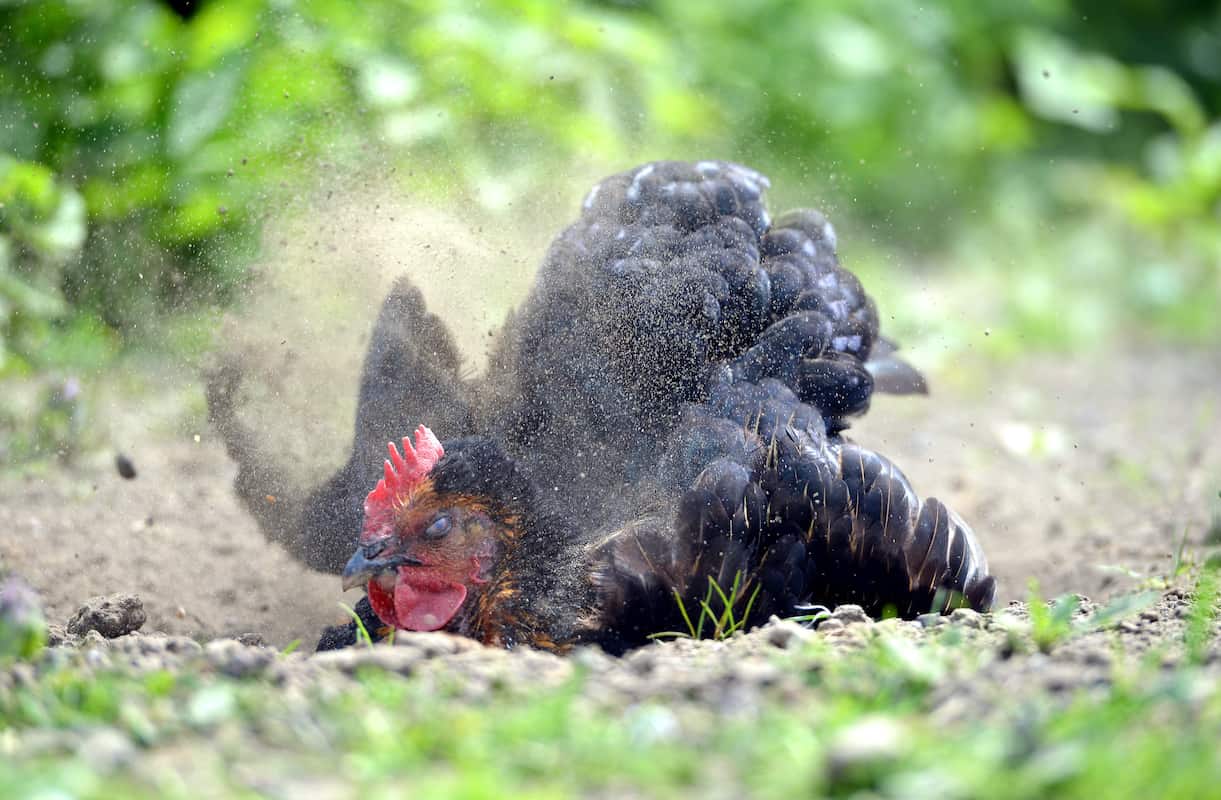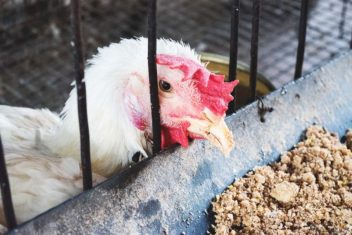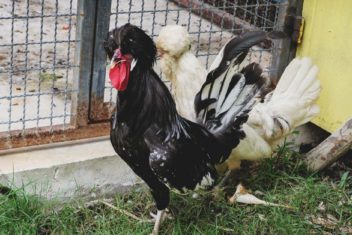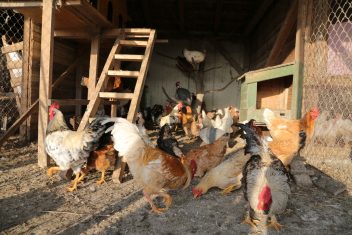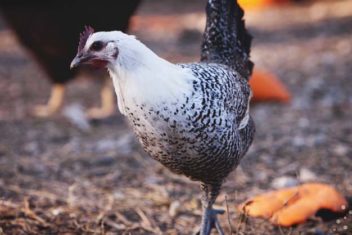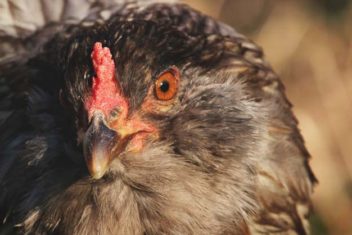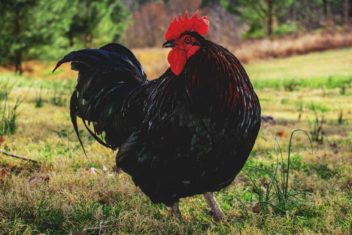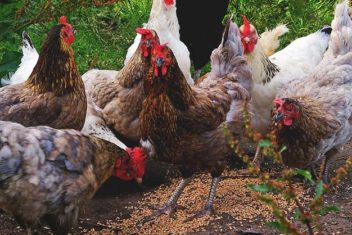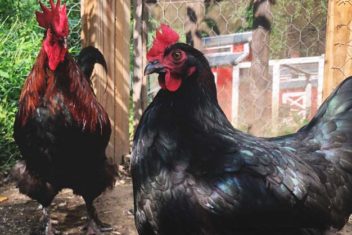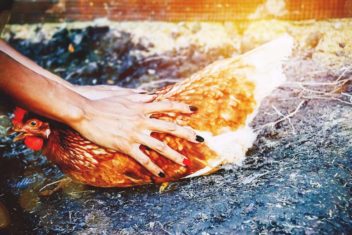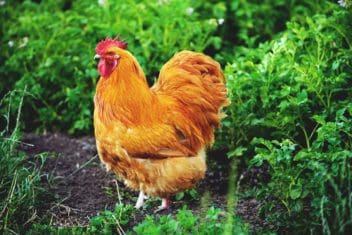“Savannah! The chickens are dying! Like a lot of them!”
Oh no! My heart starts pounding and I race out to the chicken run only to find half my flock joyously dust bathing. This was a mistake my mother and I only made once before figuring out that dust bathing chickens look a bit like a chicken massacre.
Despite looking slightly horrifying to a new chicken keeper, dust bathing is a crucial part of keeping healthy birds.
The Benefits of Dust Bathing
Ever heard the phrase “Madder than a wet hen”? Turns out chickens do indeed get upset when they get wet, so they prefer bathing in dirt. When chickens feel the need to go clean up, they roll around in some nice dry dirt. While this isn’t how we’d want to get clean, it certainly serves an excellent purpose for our feathered friends.
1. Pest Control
As you likely know, chickens are prone to a number of external parasites such as mites and lice. By regularly dust bathing and keeping dirt in and around their feathers, chickens are able to deter and rid themselves of these pesky bugs.
However, in cases of an infestation, you will need to treat your flock for the parasites. Dust baths are excellent prevention measures against parasites. If you do get an infestation despite dust baths, you’ll need to stage an intervention to rid your chickens of parasites once and for all.
2. Heat Regulation
It’s important to pick the right chicken breed for your climate because unlike us, chickens lack the ability to sweat. On a hot day, chickens can overheat easily and they need ways to cool themselves down quickly and effectively. Rolling and kicking around in dirt not only helps to fan feathers out but scratching down to the cool earth also aids in cooling down a hot bird.
Creating a Dust Bathing Area
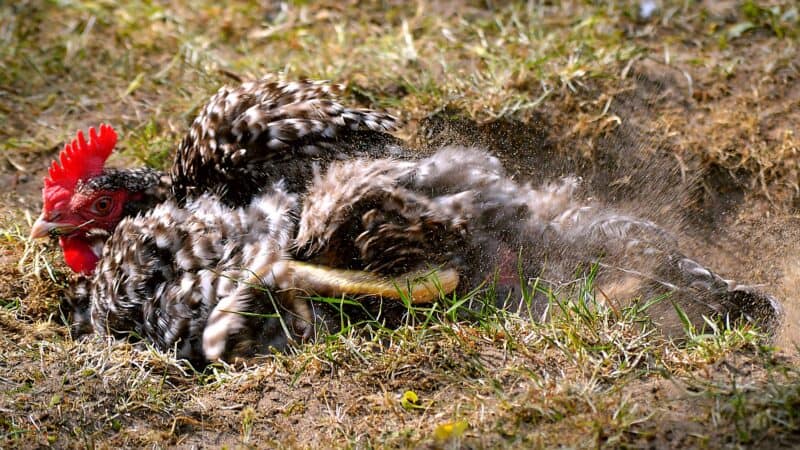
A good dust bathing area can be as simple or extravagant as you’d like to make it. Truthfully, as long as chickens have a spot to plop down and roll around, they won’t complain. However, making an area visually appealing makes for a more attractive chicken run.
1. Chickens Have a Mind of Their Own
Now, before you get too excited about making a dust bath, don’t forget that chickens can be quite finicky in these matters. Some chicken keepers have poured effort into excellent dust bathing areas only for their birds to go wallow in the compost pile.
2. Picking the Ideal Spot
In the event your chickens have already chosen a dust bathing spot, you may consider keeping the dust bath in that very spot. However, chickens aren’t the best judges of outside factors such as rain, so you’ll need to assess things like that for them.
Keeping rain off your dust bathing area is important because otherwise there will be a mud pit every time it rains. If the dust bath does get some rain on it, it’s important to ensure there is a way for water to drain off.
An additional factor to consider may be proximity to the coop so the dust bath is easily accessible to all members of the flock.
Is the dust bath easily accessible for you? If you’re going to be occasionally maintaining it, you don’t want it under a large bush.
Keep it a fair distance from the waterer. Water spilling into the dust bath area won’t only become a huge mess, it will also be less appealing to your chickens.
3. Using Containers For Dust Bathing
Using a container such as a kiddie pool or a galvanized water trough makes it easy to keep the contents of your dust bath controlled.
Keep in mind that if you use a container for your dust bath, there can be some potential issues that will arise. Chickens may be slightly deterred from the dust bath if they feel like it’s an intimidating foreign object. On the flipside, chickens can be quite curious and interested in the new addition and be excited to check out their new commodity.
If you choose to use a container for the dust bathing area, it must be covered to avoid becoming a mud puddle. Containers cannot drain like a natural spot in the ground would and they can quickly become unappetizing to even the most adventurous chicken.
4. Container Alternatives
There are ways to contain a dust bath to an extent without putting everything in a kiddie pool to turn into a muddy mess.
You can surround your dust bathing area with tree stumps or logs to define the dust bathing area and leave room for drainage.
Another option is using a few different tires and putting dust bathing material in each tire for smaller dust baths. You could even spray paint your tires to add pops of color to your chicken run! Chickens do enjoy community dust bathing, so you may experience some crowding if your chickens aren’t great at the spacing between their tires.
Adding to the Dust Bath
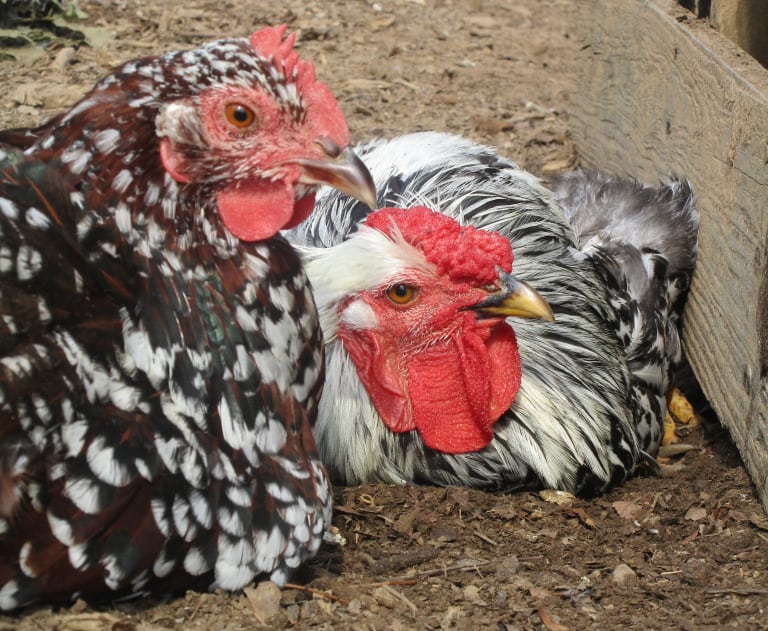
1. Dirt
If your chickens have made their own dust bathing area, you likely won’t need to add any additional dirt to their space. When you’re making your own dust bath for your birds, you’ll need dirt for your base. Dirt for dust bathing should be finer, not heavy and clay-like dirt. The idea is to have material that can easily be fluffed to go in and around feathers.
2. Sand
For those that have heavier dirt, you can mix sand in with your dirt for a looser, finer mixture. Sand makes a great additive to any dust bath because it is fine and doesn’t cake easily. The addition of sand can also help with drainage in the dust bath.
3. Wood Ash
Wood ash makes an excellent addition to your base of dirt and sand because it helps fight both internal and external parasites. When adding ashes to your dust bath, make sure it is only wood ash and not ashes from charcoal briquettes or wood that has had lighter fluid on it.
4. Herbs
There are many herbs, both fresh and dried that will make a perfect addition to your dust bath. One herb that is easily located is mint, which makes an excellent insect repellant. Thyme is also well known for its bug-repellent properties, perfect for deterring mites and lice. There is no end to beneficial herbs for use in the chicken coop, run, and dust bath.
5. Diatomaceous Earth
Diatomaceous earth is basically sharp, tiny dust-like particles that can literally cut tiny parasites such as mites and lice. Don’t worry about your chickens, they’ll be just fine and feel great without pesky parasites! Just a couple added handfuls to the dust bath will do an excellent job combatting creepy crawlies you don’t want around.
When it comes to diatomaceous earth, there is food grade and pool grade diatomaceous earth available. Make sure to only use food grade diatomaceous earth because pool grade diatomaceous earth is poisonous for animals and humans.
Dust Bath Maintenance
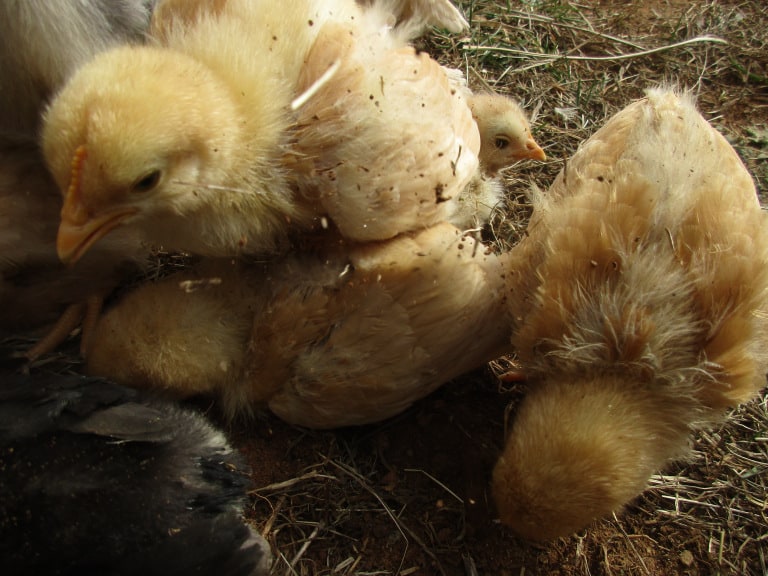
Maintaining your lovely new dust bathing space isn’t too difficult and really doesn’t require a lot of time. Over time, you’ll notice some of your dust bath additions such as your herbs slowly disappear. Make sure to keep your dust bath full of all the good things that make the dust bathing experience especially beneficial for your birds.
Letting Your Birds Enjoy Their Bath
Congratulations on providing your chickens with one of the most important things they’ll need for their health.
Watching chickens joyfully scratch and toss around in the dirt is a sight that never gets old. Your chickens are sure to thank you for their lovely dust bath additions. While a dust bath may not be our definition of clean, our feathered friends sure do enjoy it!
